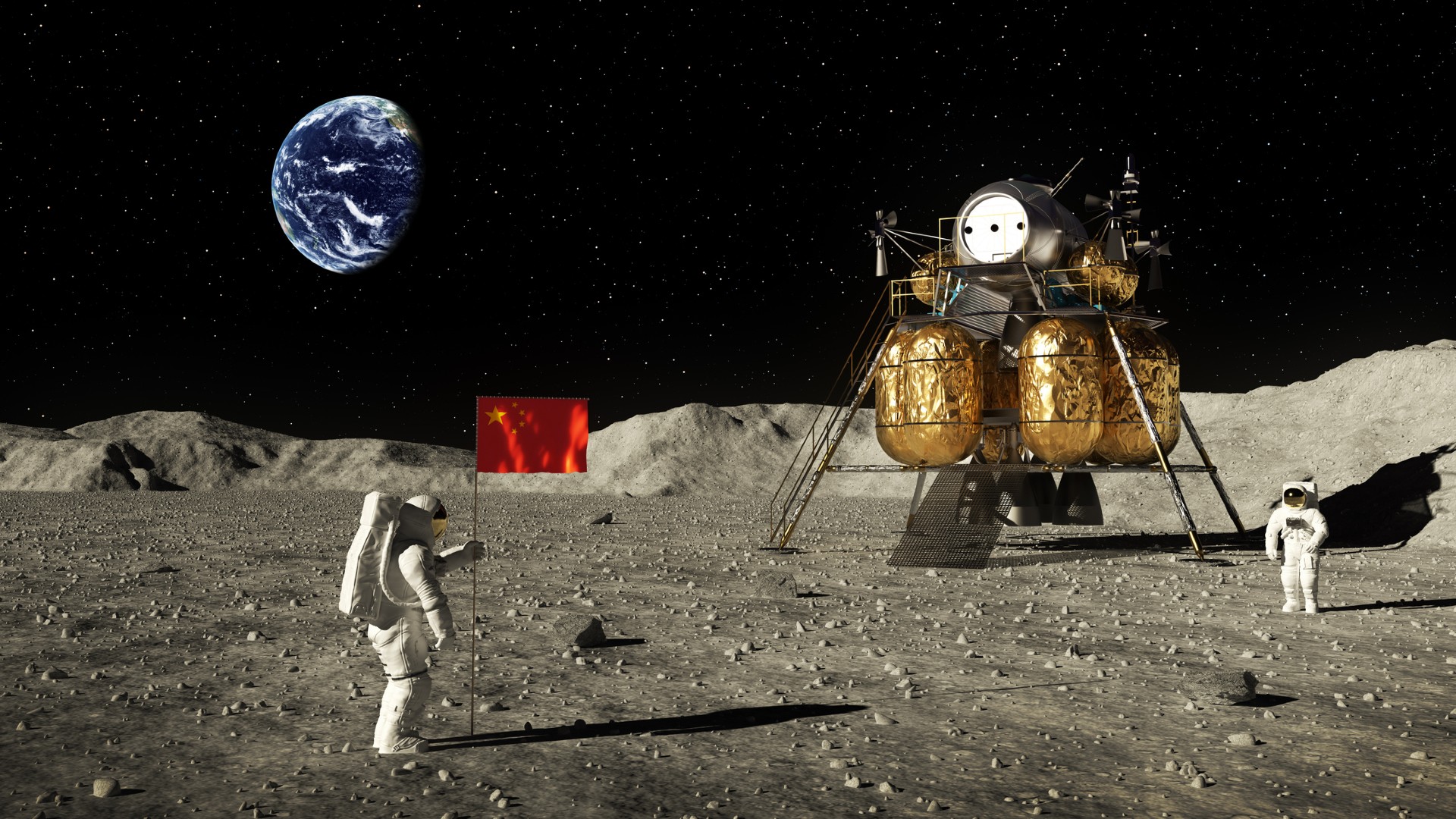China plans to put astronauts on the moon before 2030
China and the U.S. are eyeing the same landing sites in the lunar south pole.

China plans to land astronauts on the moon before 2030 and add a fourth module to its space station, officials with the nation's space agency said.
The country's plans for landing on the moon include a "short stay on the lunar surface and human-robotic joint exploration," Lin Xiqiang, deputy director of the country's human spaceflight agency, said during a news conference at the Jiuquan Satellite Launch Center, according to a report by The Associated Press published Monday (May 29).
Both NASA and China's space agency are eyeing potential landing sites near the moon's south pole, where water ice and other resources that could prove to be valuable for lunar settlement and exploration can be found.
Related: China builds simulated moon chamber to prep for crewed lunar landings (video)
Xiqiang also announced plans for adding a module to the Tiangong space station, which currently features three modules that were launched one at a time since May 2021 and put together in space. China's plans for its space station, which was completed in November 2022, include hosting a three-member crew at all times for at least a decade. The fifth such crew, including the country's first civilian astronaut, was launched late Monday (May 29) and reached the space station early on Tuesday (May 30).
The space station's fourth module will be launched "at an appropriate time to advance support for scientific experiments and provide the crew with improved working and living conditions," Xiqiang told reporters on Monday.
With the addition of the fourth module, the T-shaped space station may look like a cross, officials had previously said. In the long run, China plans to add two more sections to its space station, which would bring the total number of modules to six.
Breaking space news, the latest updates on rocket launches, skywatching events and more!
In Monday's news conference, officials stated China's willingness to also work with international partners, although the extent to which such collaboration can manifest with the U.S. remains unknown.
While NASA has maintained that the "cooperation with China is up to China," the Wolf amendment, a restrictive legislation passed by Congress in 2011, bars NASA — a federal agency — from using funds from the federal budget to engage in direct cooperation with the Chinese government.
"Our country's consistent stance is that as long as the goal is to utilize space for peaceful purposes, we are willing to cooperate and communicate with any country or aerospace organization," Li Yingliang, technology director of the Chinese human spaceflight agency, said on Monday. "Personally, I regret that the U.S. Congress has relevant motions banning cooperation in aerospace between the U.S. and China. I very much regret that personally."
NASA's Artemis 3 mission aims to launch astronauts for a crewed landing mission near the lunar south pole in late 2025, while China's Chang'e 7 robotic mission, which aims to soft land a rover in the same region, is scheduled for 2026. And a few of the potential landing sites for both missions are the same.
This overlap, which will require both countries to collaborate to some extent, is in part due to preferred lightning conditions at the lunar south pole, while being close enough to permanently shadowed regions, where water ice and other useful resources are thought to be present.
"NASA discusses its plans for lunar exploration at various multilateral forums, such as the ISECG [International Space Exploration Coordination Group], of which China is a member," a NASA spokesperson had told Space.com last year.

Sharmila Kuthunur is an independent space journalist based in Bengaluru, India. Her work has also appeared in Scientific American, Science, Astronomy and Live Science, among other publications. She holds a master's degree in journalism from Northeastern University in Boston.
